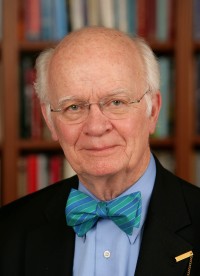Time capsule: Flawed prediction
The theological education issue of this magazine in 1958 featured a ruckus-raising editorial, “Domesticity in Our Seminaries” (April 23). The author was Ted Gill, my office mate and mentor in religious journalism. The editorial was unsigned, but no regular reader could have failed to discern Gill’s style, described by one colleague as “late baroque, early rococo, unfailingly grabbing.”
The editorial appeared in a time of great change. Six years earlier I had graduated from seminary along with 116 other males. Only a few of that number (ex-GIs) were married. Most of the rest were affianced, some for up to a decade. Ten years later when I spoke at a seminary banquet, the single seminarians were being needled for their unmarried state.
Somewhere in those years “domesticity” appeared. Gill feared a slippery slope that would undo Protestant seminaries. I resurrect the 1958 piece not to make fun of Gill for having been born too early to be as wise as we are now, but to show how suddenly the concepts and concerns of theological education can change.
Gill championed seminaries of celibates at a time when you could assume that seminarians were men. A decade later women were becoming a large presence in seminaries. Gill also assumed that seminarians were fresh out of college. Some of his regrets were well founded: along with the gains in family-based student bodies came a downside. As his editorial’s title suggested, he worried that students would be captive to a culture that already worshiped domesticity.
This page is licensed to me with the mandate to try to keep things light. So let me offer some heated but light samples of Gill’s concerns. “By what great shift in sociology, psychology, temperature or radiation are we to account for that claimant coupling . . . which threatens now to turn our dormitories into nurseries, our campuses into play pens? . . . If the choice is ivory tower or brooder coop, the remoter symbol looks better all the time.
“Schools long hard-pressed to house their single students, barely used to finding room for couples, suddenly are swarming with babies—dear, darling, pink-cheeked, bright-eyed, problematical babies.” Schools were pouring funds into this “massive swaddling.”
At seminaries “women work, men study, families are raised in shifts,” so nerves grow taut and “there are crackups: some lurid ones, strictly for whispering. . . . The trouble with the church today is exactly its dreadful domestication.” This drift to domesticity “ought to be watched. Maybe it is a wave of the future which can only be watched.”
That wave was a tsunami of such force that it swept away the watchers, who, back ashore, found new footing, adapted and innovated. And those who want to sneer at Gill for his bad guesses and worse wishes might file the 2006 theological education issue away, dig it up 48 years from now and look for traces of fallibility and missed guesses.





